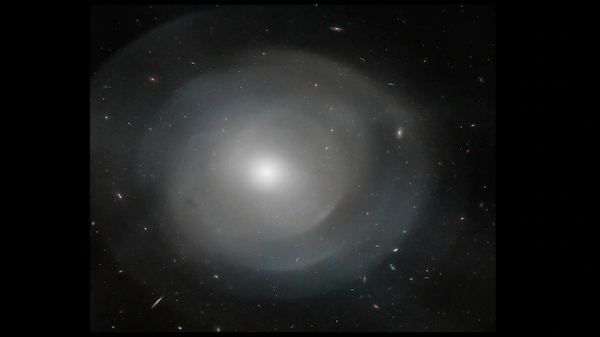Hubble Telescope captures galaxy 2.5 times bigger than Milky Way
27 May 2022 17:39:25
The Hubble Space Telescope which is known well-known for capturing mystical images of galaxies and space, has now captured a stunning image of a galaxy, which is nearly 2.5 times bigger than the Milky Way.

The Hubble space telescope captured the central portion of NGC 474, a galaxy 100 million light years away from Earth that spans roughly 250,000 light years across and is 2.5 times larger than the Milky Way.
According to Nasa, NGC 474 consists of a series of complex layered shells covering its spherical shaped core. The origins of these shells are unknown, but astronomers believe they are the result of a giant galaxy absorbing smaller galaxies, for example. They say that it's the same as a pebble that creates ripples on a pond when dropped into the water, similarly shells are created from waves made by the absorbed galaxies.
The majority of elliptical galaxies consist of galaxy clusters and shelled ellipticals and are usually found in empty space. However, roughly 10 per cent of elliptical galaxies contain shell structures, which could indicate that they have cannibalised their neighbours.
Data from Hubble’s advanced camera was used to create the image of this galaxy where it represents visible blue light and the red colour represents nearby infrared light. Nasa also used data from Hubble’s Wide Field and Planetary Camera 2 and Wide Field Camera 3.
Hubble has been the eyes and ears for scientists beyond Earth, looking at the vastness of the cosmos, discovering planets, stars and celestial phenomena. Three decades after it was launched and several repair missions later, the spacecraft remains healthy and continues to observe the universe as it awaits the James Webb Telescope.
With the James Webb Space Telescope now set to commence operations, the Hubble will remain a critical asset for astronomers across the world. Deployed on April 25, 1990, Hubble has provided us with groundbreaking scientific discoveries and iconic images of space for over three decades.
.
.